Celestial Sounds from Norway by the 23rd Icon of Echoes: Erik Wøllo
by John Diliberto 5/25/2021
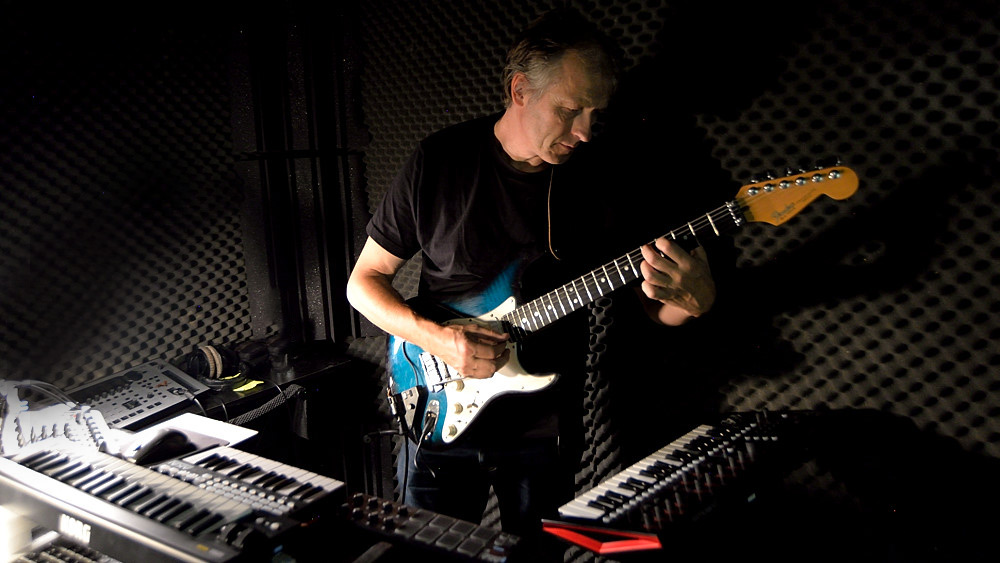 Outside of the Echoes realm, I think Erik Wøllo may not be so well known, but in the electronic and space music community we represent, he’s been an understated giant since the mid-1980s when he released his 3rd album, Traces. Before that, he’d played progressive rock in bands like Celeste. But Traces took him into an electronic direction. He has a deep sense of melody and groove that you could hear on albums like Solstice, Gateway and Threshold Point and his music simply transports you to a higher, better ground.
Outside of the Echoes realm, I think Erik Wøllo may not be so well known, but in the electronic and space music community we represent, he’s been an understated giant since the mid-1980s when he released his 3rd album, Traces. Before that, he’d played progressive rock in bands like Celeste. But Traces took him into an electronic direction. He has a deep sense of melody and groove that you could hear on albums like Solstice, Gateway and Threshold Point and his music simply transports you to a higher, better ground.
Erik Wøllo manages to synthesize influences from Tangerine Dream and Pink Floyd to Steve Reich and modern electronica. But as one of the most distinctive voices in contemporary instrumental music, he’s truly morphed these sounds into something that is wholly his own. I have to be honest in saying that the difference in beauty and impact of the first nine albums on this list is negligible to non-existent.
10 ESSENTIAL ERIK WOLLO ALBUMS
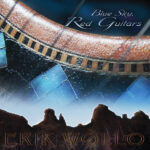 1- Blue Sky, Red Guitars
1- Blue Sky, Red Guitars
Sometimes Erik is acoustic, as on Guitar Nova, sometimes all electronic, like Polar Drones, but it’s the blending of these two worlds that makes Blue Sky, Red Guitars really glisten. Erik Wøllo bases most of his compositions on ostinato patterns that flicker at your consciousness like a mandala in motion, constantly cycling in prismatic shifts. Because of this modal approach, and his arching single string e-bow solos, Wøllo ‘s music has an Indian sensibility, but without sounding Indian at all. Revealing roots that you might not suspect from most of his music, Wøllo covers two songs from German electro-dance godfathers, Kraftwerk. He transforms their “In the Hall of Mirrors” and “Computerlove” into pastoral guitar chamber instrumentals. It’s difficult to make music that is at once pristine and still screams through the air, but Erik Wøllo does it on Blue Sky, Red Guitars, an album that is about as perfect as they come.
 2- Wind Journey
2- Wind Journey
With Wind Journey, Wøllo returned to synthesizers after his Guitar Nova album. But he kept his electric guitar at hand for some gloriously heroic solos, especially on tracks like “Dream Line.” A subtle, tugging ostinato pattern builds into layers of keyboard orchestrations topped by guitar that starts out in a pastoral, acoustic mode but segues into a soaring lead solo that recalls Steve Hackett during his Spectral Mornings era.
Wind Journey is centered by “Seasons Suite,” a ten-part sequence of moody vignettes. Erik Wøllo’s roots in progressive rock are clear and he uses them to articulate a cinematic music.
 3- Gateway
3- Gateway
Employing “cinematic” as an adjective for this music is a tiresome cliché, and it’s been applied to everything Wøllo has recorded, including the 2017 album titled Cinematic. Yet, on his Gateway, his music does give you the sense of piloting down canyons, soaring between mountains and launching on trajectories toward the heavens. Put the title track of Gateway on loud while driving, and your car won’t be the only thing on cruise control as Wøllo ’s music turns an everyday commute into a fantasy journey.
On songs like “Life in Technicolor,” Coldplay tried (with the help of Jon Hopkins) to attain the kind of timeless, shifting mood that is Erik Wøllo’s stock in trade. And like them, Erik Wøllo brings a minimalist’s sense of austerity and design to expansive synthesizer orchestrations, like on the heroic strains of “The Traveler.” It’s that perfect Wøllo mix of ping-ponging electronic rhythms and melodic pads that sweep in searchlight patterns.
With all the electronics, it’s almost easy to forget that Wøllo is a gifted guitarist. But most of the music is generated from a guitar or guitar synthesizer. He can make his six strings sound like an electronic symphony and on the highly ambient tracks that conclude the album, like “The Mental Trail” and “Full Circle,” it sounds nothing like a guitar at all in their glacial motion and vast, horizon-like textures. But on pieces like “First Arrival” he can also pull out twangy liquid leads.
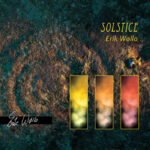 4-Solstice
4-Solstice
Although he’s a child of German space music and Eno ambiences, Erik Wøllo has always pursued a more organic sound. The Norwegian synthesist combines an uncanny ear for melody with an Enoesque sense of ambience on his 1992 album Solstice. Wøllo skillfully mixes synthesizer and sampled sounds, not in a cut-and-paste fashion, but as part of a blended orchestration. Like Steve Roach and Robert Rich, he uses lots of hand percussion, or at least samples thereof. Rhythms pulse and percolate against the icy synthesizer textures for Nordic rituals that dance on the ice field around a tribal fire. Wøllo creates a surrealistic, floating space that manages to be tuneful and exploratory as well, a rare combination.
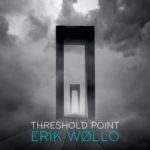 5- Threshold Point
5- Threshold Point
While most of his music has been composed in Norway, much of Threshold Point came into being in a small New York City bedroom while he cared for his sister who was in the final days of her life. You can hear Threshold Point as both an intimate rumination on mourning and crossing the threshold into another life, especially on the somber opening track, “Behind the Clouds.” But it’s also an album that takes you into another space, away from tragedy.
Threshold Point pushes Wøllo’s sound in new directions including a couple of percussive tracks that aren’t the norm for him. The “Mosaic of Time” quartet draws upon his work in African music with singer Kouame Sereba as well as inspirations from the techno tribal sound of Jon Hassell. “Mosaic of Time 1 – Route Diverge” builds on a cyclical percussion loop with a Jon Hassell trumpet-like tone blown across winds out of the Serengeti. “Mosaic of Time 2 – Threshold Point” loops an even heavier, more African based percussion loop pushing under a siren swirl of synthesizers and a spare piano melody.
Threshold Point is specifically concerned with the concept of passing through into another plane of existence or experience, but really, Erik Wøllo’s music always takes you to another place.
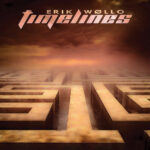 6- Timelines
6- Timelines
After a couple of albums in the Drone Zone with Silent Currents and Airborne, Timelines returned structure melody and groove. The central core of this album is acoustic guitar, on which Wøllo composed all of the tracks, except, I suspect, the spacey closer, “Ocean.” On “Blue Rondo,” (no relationship to the Dave Brubeck classic) an acoustic guitar arpeggio seems to reveal itself out of an electronic swirl, merging with glurpy water drip electronic percussion, soaring synth pads and growling electric guitar drones, before evolving into a gently percussive piece with some searing ebow guitar leads.
“Visions” is the centerpiece of the album, a slowly building work of interlocked percussion, electronic cycles and that ebow guitar that seems to emerge like a stealth bomber out of the storm clouds. Maybe that imagery is a little foreboding, but that’s what draws me to Wøllo’s music. On a track like “Along the Journey” there’s a darkness that balances the light, a dark undertow that serves to put his melodies in beautiful bas relief. And then of course, there’s the thudding percussion and spiraling ebow solo that reveals this is no country walk.
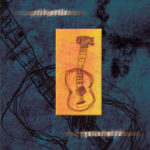 7- Guitar Nova
7- Guitar Nova
The title of Guitar Nova doesn’t quite do justice to the wonderfully evocative, beautifully played and subtly woven themes of Erik Wøllo’s all-guitar CD. It’s not a guitar virtuoso flight, but carefully crafted orchestration of plucked strings. We know Wøllo for his evocative synthesizer orchestrations on albums like Solstice and Images of Light, but even those CDs largely began with his fingers on his guitar synthesizer. On this CD, he layers-in mostly acoustic guitars along with balalaika and kora, creating a sound that seems to ring off the mountainous landscapes of Norway where Wøllo lives. He brings in a Ry Cooder-like slide guitar in “Rainbows” and builds a bell-like minimalism on “Hildring.”
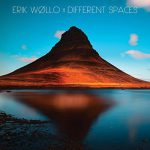 8- Different Spaces
8- Different Spaces
Steve Reich is a heavy influence on Erik Wøllo and nowhere is that more apparent than his 2017 double album, Different Spaces. It is Wøllo at his most exploratory and minimalist. Pulsing sequencer loops move through tracks like “Similar World” as the guitar arches across euphoric bliss, percussion looping like it’s swishing through a muddy field, all fecund liquidity. “Past Themes” is a haunting work that lives up to the wistful reverie suggested by the title. This is with an echoing arpeggio running though it and more of that squishy percussion. It’s like an old man, peering out the window as past remembrances flash before his eyes. The guitar cycle that emerges is straight out of Steve Reich-style minimalism. But there are plenty of vintage spacescapes as well, including the driving “Cascade Falls,” with a percussive sequencer groove and Wøllo’s searing melodies.
 9- Emotional Landscapes
9- Emotional Landscapes
The title is underwhelming, but the music is an ecstatic journey traversing aurora borealis spacescapes and quiet ambient moods. It’s on albums like this that you can hear Mike Oldfield’s influence on Wøllo, as he builds a 21st century orchestra, layering guitars acoustic, electric and synthesized. A musician with a delicate touch, Wøllo sometimes shapes quiet lines out of violin-like sustains that echo in space soliloquies. While his rhythms rarely get above a slow-chill, Wøllo’s solos often burn with a dark intensity. Tracks like “Second Totem” have a quiet heroism about them, the sound of impending adventure. “Sounds of the Seen, Pt.1,” one of the more dynamic tracks, begins as a haunting adagio for cello, before launching into a crushing electronica assault that ends in the sound of humanity moving, featuring location recordings Wøllo made under the World Trade Center a few days prior to 9-11. It’s a dose of grounding reality in a music that seems to constantly hover just above the firmament, rooted only in imagination.
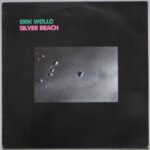 10-Silver Beach
10-Silver Beach
Silver Beach is Wøllo’s most digital-sounding album, and with the exception of Transit, one of his jauntiest, a word I wouldn’t often use with Wøllo. Released in 1987, Silver Beach starts with a dance-like, vaguely Caribbean, groove with looped, tuned percussion across which Wøllo lays a meandering synth solo. I keep thinking about what this sounded like in 1986, and while today it seems a bit dated, back then it would have sounded vibrant and joyous. Tracks like “Journey” with its 8-note sequencer, steady-state drum machine pattern and swirling, siren melody are like nothing that Wøllo has done in the 90s and beyond. Silver Beach manages to be innocent and forward looking.
See the complete of 30 Icons for 30 Years of Echoes.
